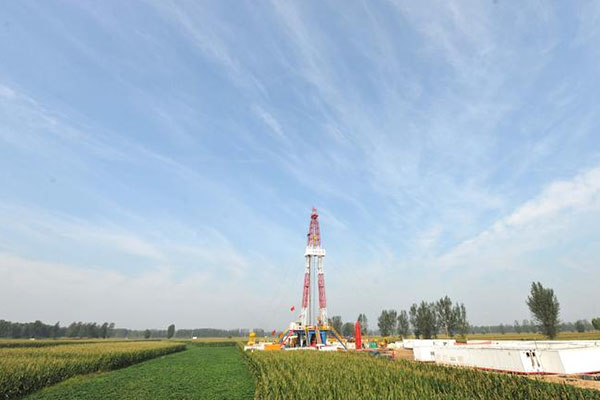First of all, both water-based and oil-base drilling fluids have advantages and disadvantages, and they adapt to different stratigraphic conditions. Therefore, there is no superior or inferior stratum, and it is impossible to arbitrarily say which one is the future development trend. API and IADC classify the drilling fluid system into nine categories, the first seven types are water-based drilling fluid, the eighth type is oil-based drilling fluid, and the last type is gas as the basic medium. Non-dispersive system, 2, dispersive system, 3, calcium treatment system, 4, polymer system, 5, low-solid system, 6, saturated brine system, 7, well completion fluid system, 8, oil-base drilling fluid system, 9, air, fog, foam and gas system.
Water-based drilling fluid has the advantages of low cost, simple configuration, treatment and maintenance, wide source of treating agent, multiple types available for selection, easy control of performance, etc., as well as good protective effect of oil and gas layer. Oil-base drilling fluid refers to the oil as the continuous phase drilling fluid. As early as the 1920s, crude oil was used as drilling fluid to avoid and reduce the occurrence of various complicated situations in drilling. However, it is found in practice that crude oil has the following disadvantages: small shear force, difficult to suspend barite, large filtration loss, and volatile components in crude oil can easily cause fire. As a result, it gradually developed into two oil-base drilling fluids with diesel as continuous phase -- all-oil drilling fluid and water-in-oil emulsion drilling fluid. In total oil drilling fluid, water is useless component, its water content should not exceed 7%. In oil-ladle water drilling fluid, water is distributed evenly in diesel oil as the necessary component, and its water content is generally 10%~60%.
Compared with water-based drilling fluid, can oil-base drilling fluid with high temperature resistance, resistance to salt, calcium contamination, borehole wall stability, good lubricity and for hydrocarbon reservoir damage is much smaller, and other advantages, has now become a drill difficult high temperature deep well, high Angle deviated and horizontal Wells and the important means of various complex formation, and can be widely used for spotting fluid, perforating completion fluid, workover fluid and fluid drive heart. However, the preparation cost of oil-base drilling fluid is much higher than that of water-base drilling fluid, and when used, it will often cause serious impact on the ecological environment near the well site, and the mechanical drilling speed is generally lower than that of water-base drilling fluid. These disadvantages greatly limit the spread and application of oil-base drilling fluids. In order to improve drilling rate, low gel oil package water emulsion drilling fluid was widely used from the mid-1970s. In order to protect the ecological environment and adapt to the needs of offshore drilling, from the early 1980s, the low-toxic oil-water emulsion drilling fluid with mineral oil as the base oil was gradually popularized. At present, all-oil drilling fluid has been used less, so generally speaking, the oil-base drilling fluid refers to the water-in-oil emulsion drilling fluid with diesel oil or low-toxic mineral oil (white oil) as the continuous phase.

Post time: Aug-09-2018




